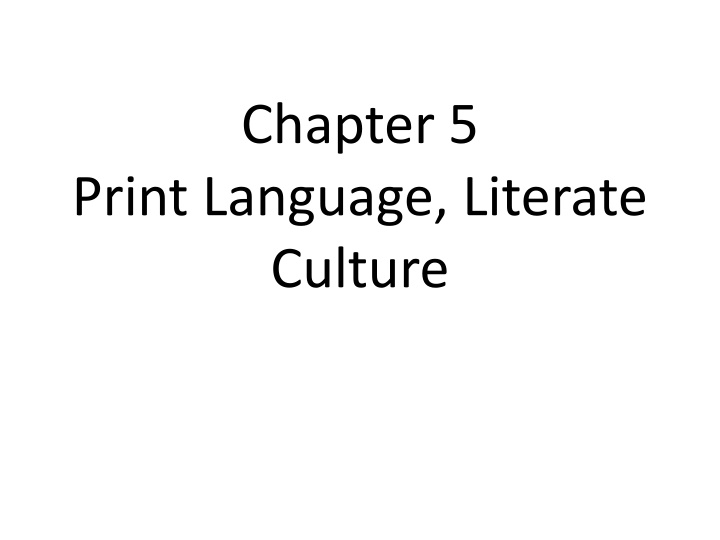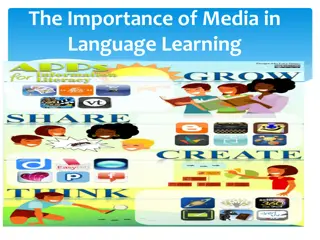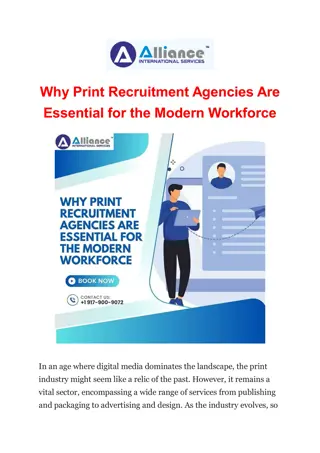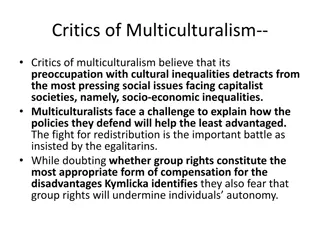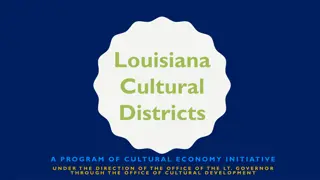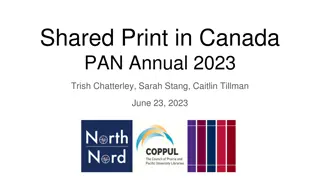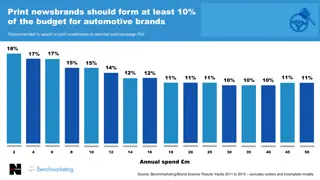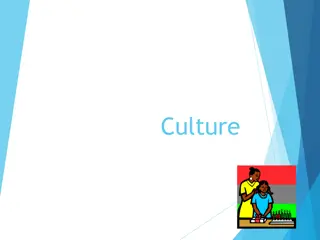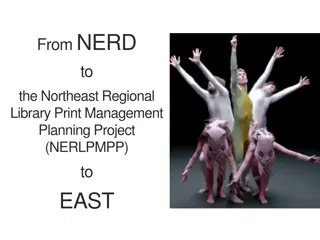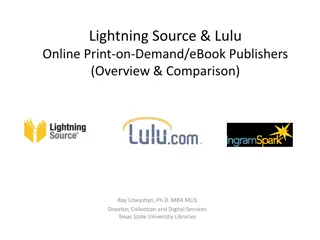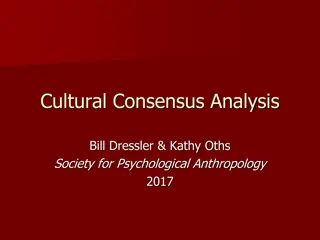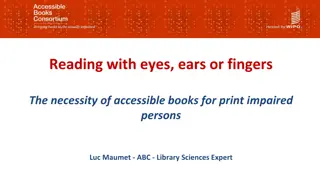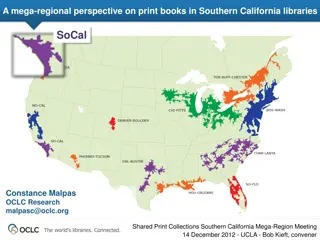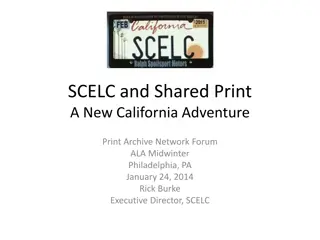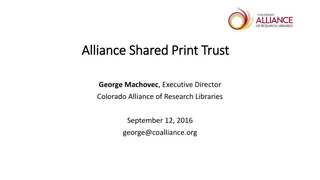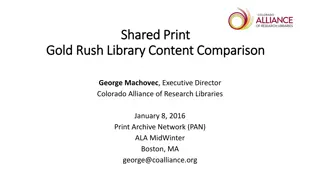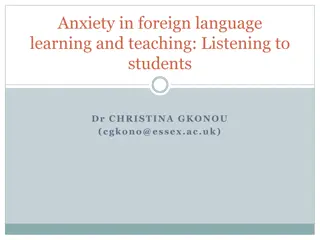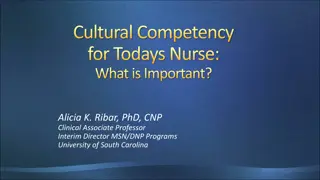Print Language & Cultural Impact
The content delves into the historical and technological evolution of language, discussing the influence of writing, oral traditions, and the shift towards print culture. It explores the power dynamics in medieval times, the social construction of literacy, text vs. discourse, and literacy events within various contexts.
Download Presentation

Please find below an Image/Link to download the presentation.
The content on the website is provided AS IS for your information and personal use only. It may not be sold, licensed, or shared on other websites without obtaining consent from the author.If you encounter any issues during the download, it is possible that the publisher has removed the file from their server.
You are allowed to download the files provided on this website for personal or commercial use, subject to the condition that they are used lawfully. All files are the property of their respective owners.
The content on the website is provided AS IS for your information and personal use only. It may not be sold, licensed, or shared on other websites without obtaining consent from the author.
E N D
Presentation Transcript
Chapter 5 Print Language, Literate Culture
Written Language, textual culture Historical perspective on how technology affected the relationship bet language & culture: Invention of writing (3000 BC) Oral tradition textual tradition Chinese scribal culture/ passing wisdom & truths Text s meaning/ social prestige literate education Clip (24) Respect to textual authority was imp to early religious traditions/ study of sacred texts revelation / to recover the original truths passed orally By God, angels and prophets. The absurdity of the quest of one true meaning/ multiple meanings/ legal documents re-interpreted
Print & Power Institutional power ensuring cultural continuity medieval times/ monks & scribes gate keepers & interpreters of tradition against cultural change. Print culture: no need to hand copy Religious authority decline Translation of Bible meanings & truth accessible to all Church monopoly replaced by secular power Traditional academic practice imposed its own context of interpretation/ emphasized form over meaning/ interpretation should be independent of reader s response/ bad student
Social Construction of Literacy Recent types of literacies linked to various genres: Literary literacy/ press/ instructional manuals/ scientific/ marketing/ novels & poems To be literate to understand & manipulate social & cultural meanings of print language in thoughts, feelings and actions. Children from different social backgrounds different types of literacies. (e.g. narrative style)
Text and Discourse Written language can be looked at as either text (fixed and stable) or discourse (interactive and inferential) Text: A stretch of written language as the product of intention has a fixed & stable relation to its context of culture Discourse: (A) via coherence e.g. deictic this in poem/ either demonstrative cohesive device / or discourse indicative factor of coherence (B) via internal cohesion e.g. Aspirin label considering corporate culture / commercial & legal interests must be included when interpreting text/ coherent discourse (C) Cultural coherence e.g. American independence / most difficult for foreign readers/ drawing on reader s cultural knowledge
Literacy event, prior text, point of view Literacy event: The interaction of the reader with the text within a social context. Defined by (common social practices with written texts/ common ways of interpretation) Includes situational & cultural dimensions Situational context Events Audience Purpose Text s register Its key Prior text Point of view Discourse clip
Genre Genre: In general ( a class or category of art (or any other field) having a particular form, content, or technique. e.g, the genre of epic poetry ) A socially approved type of communicative event, either spoken or printed. Dependent on specific context of situation or culture. Related to text type & language choice/ e.g. sermon register Clip
